




























Airlines, Airports and Airliners 3 April 2024
Compiled by Willie Bodenstein
Google Banner Ad
This Week in Airliner, Airports and Airlines.
Emirates And Ethiopian Airlines alleged collision at 37,000ft averted by Somaliland ATC.
ICAO Council Briefing: Industry surge sharpens global aviation leaders' sustainability focus.
Kenya Airways records an operating profit of KShs 10.5 billion in full year results.
Air Malta ceased flight operations on 30 March 2024.
Schiphol conducts trial with self-driving buses on airside.
Gulfstream G700 Earns Faa Certification.
HIA Milestone Delivery Report lists critical next steps for UK to be leader in global hydrogen aviation race.
Aercap delivers first of four New Airbus A330neo aircraft to Corsair.
Accidents and Incidents
Bonus video - Ford Tri Motor Scenic Flight AirVenture 2013

EMIRATES AND ETHIOPIAN AIRLINES ALLEGED COLLISION AT 37,000FT AVERTED BY SOMALILAND ATC
A few minutes before the collision, the efforts made by the Somaliland Air Traffic Controllers and the pilot of the Ethiopian Airlines caused the pilot to quickly change his altitude and climb to 39000ft.
Not only that, the air traffic controllers in Mogadishu (Mogadishu Controllers) regularly make mistakes like these, which are a threat to the safety of international flights.

We share with international agencies and the whole world that the stubbornness and lack of knowledge seen in the Mogadishu Tower is a threat to the safety of the air.
Statement from Emirates
Despite the reports from Somaliland, Emirates says that its aircraft was not involved in an incident on the date and time in question. An Emirates spokesperson said to Simple Flying,
"Emirates can confirm that there was no instance of an aircraft proximity event compromising the safety of the aircraft over the airspace and during the date and time in question. All Emirates aircraft are equipped with capabilities to maintain safe separation and distance during operations."
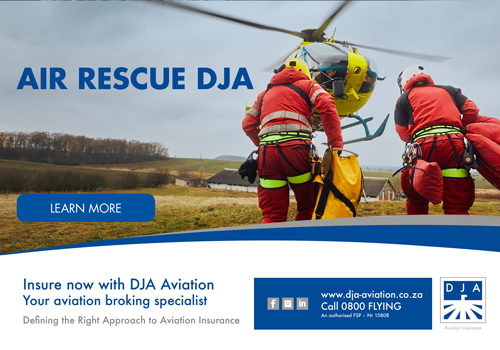

Briefing the ICAO Council on 21 March 2024, global aviation leaders underscored ICAO's key role in leading the crosscutting cooperation needed to deliver a sustainable future cantered around innovation and resilience.
An in-depth look into the industry's post-pandemic resurgence and the strategic moves required to achieve a net zero future was provided by the heads of Airports Council International (ACI), the Civil Air Navigation Services Organisation (CANSO), the International Air Transport Association (IATA), and the International Coordinating Council of Aerospace Industries Associations (ICCAIA).
Industry Recovery and the Path to Net Zero
The aviation sector has shown remarkable resilience, with ICAO forecasting that 2024 air traffic volumes are expected to exceed pre-pandemic levels. This growth underscores the urgency of addressing sustainability, with a significant focus on ramping up the production of Sustainable Aviation Fuels (SAF) to the levels needed to achieve governments' ambitious goal of net zero emissions by 2050.
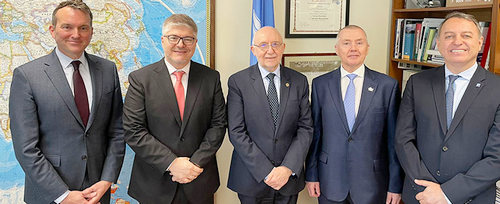
Strategic Investments and Collaboration
To assure that aviation continues to expand its role as a catalyst for sustainable development and meet international commitments, strategic investments in new aircraft technologies, decarbonization initiatives, and airspace management are imperative. The ICAO Council President highlighted the importance of collaboration here too, noting the need for "better communication and coordination across the aviation ecosystem."
"We particularly appreciate those who have demonstrated effective engagement with ICAO and understand aviation's needs," the Council President added, emphasizing the importance of transparent, continuous, and collaborative engagement among all players, including both core aviation stakeholders and new entrants.
ICAO's Future Strategy
ICAO Secretary General Juan Carlos Salazar presented an initial outline of the organization's new Strategic Plan, which is intended to help accelerate the aviation community's progress toward shared sustainability and innovation goals.
"We're charting the path forward with a blueprint that will be refined through the Council's valued insights, ensuring our united approach to the challenges of decarbonization, safety, security, and inclusive development," the Secretary General said.
Building on ICAO's 80-year legacy to be celebrated with the anniversary on 7 December 2024, the organization is poised to guide the aviation industry towards a sustainable and prosperous future. Its leadership and the adaptability of its standard-setting and capacity-building activities are essential to harness the full benefits of emerging technologies and to pre-empt potential disruptions, such as cybersecurity threats and geopolitical conflicts. The Organization's transformative initiatives, launched last year, are aimed squarely at this goal-ensuring ICAO's continued relevance and effectiveness in an evolving global landscape.


KENYA AIRWAYS RECORDS AN OPERATING PROFIT OF KSHS 10.5 BILLION IN FULL YEAR RESULTS
Kenya Airways' ongoing recovery and turnaround initiatives have resulted in the airline recording an operating profit of Ksh 10.5 billion for the year ended December 31, 2023 compared to an operating loss of Ksh 5.6 billion in the prior year, representing a 287% growth.
Financial Performance highlights:
-287% growth in operating profit of Ksh 10.5 billion compared to an operating loss of Ksh 5.6 billion in the prior year.
-The Group's total revenue increased by 53% to close at Ksh 178 billion.
-Turnover was higher by 53% as a result of higher passenger numbers and increase in capacity deployed.
-The Group reported a 37% increment in total operating costs despite a 44% increase in capacity deployed. This is mainly attributed to increased operations as the Airline bounced back from the Covid-19 impact.
-Direct operating costs increased 48% in line with increase in capacity.
-Fleet costs were lower by 47.5% due to fleet rationalization.
-Overheads increased by 22% due increase in employee costs as well as foreign currency losses caused by devaluation of the Kenya Shilling against major world currencies, especially the US Dollar.
-Loss after tax reduced by 41% to Ksh 23 billion from Ksh 38 billion.
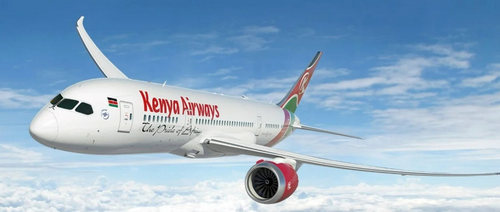
Kenya Airways Group Managing Director and CEO, Allan Kilavuka, said, "During the year, the company's main focus remained on improving customer experience, operational excellence, and cash conservation. These efforts resulted in the airline improving its On-Time Performance (OTP) to a high of 76% from an average low of 58% at the beginning of the year, ranking it as Africa's second most efficient airline. Additionally, the introduction of the Asante rewards loyalty program and the revamp of KQ's website aimed to better appreciate and reward customer loyalty while improving user-friendliness and functionality."
He added: "The company also exploited opportunities of raising the much-needed revenues by ramping up its scheduled operations as well as through passenger charters. Other initiatives undertaken by the management included partnerships with other airlines and cost containment measures."
Despite facing a Ksh 24 billion in foreign exchange losses on monetary items, loans, and leases, this year's performance marked a major milestone in the Group's turnaround strategy. The company managed to achieve a notable improvement, with a loss before tax of Ksh 22.7 billion, marking a significant stride from the Ksh 38.3 billion loss reported in the previous financial year of 2022.
Mr. Kilavuka emphasized that the airline's top priority going forward, is to continue building on the gains made in the airline's turnaround strategy, Project Kifaru. Along with this, in the near term, he said the focus is on completing the capital restructuring plan whose main objectives are to reduce the Company's financial leverage and increase liquidity to ensure the company can operate at normalized levels.
"Our primary focus going ahead is dedicating ourselves to fostering innovation, nurturing partnerships, and cultivating a culture of excellence to ensure that Kenya Airways soars to new heights of success. Additionally, we will continue to engage government on recapitalizing the business to place Kenya Airways on a stronger footing and provide a stable base for long-term growth," said Mr Kilavuka.
The Government of Kenya in its capacity as a major investor in Kenya Airways has indicated their continued strong support for the Company's operational and capital structure optimization process and are closely involved throughout the transaction process and intend to remain major stakeholders in the Company over the long term.
International Air Transport Association (IATA) predicts full recovery of the aviation industry from the Covid-19 crisis in 2024. This projected growth signifies a substantial rebound and resurgence for airlines, reflecting a renewed vigor and vitality within the industry.
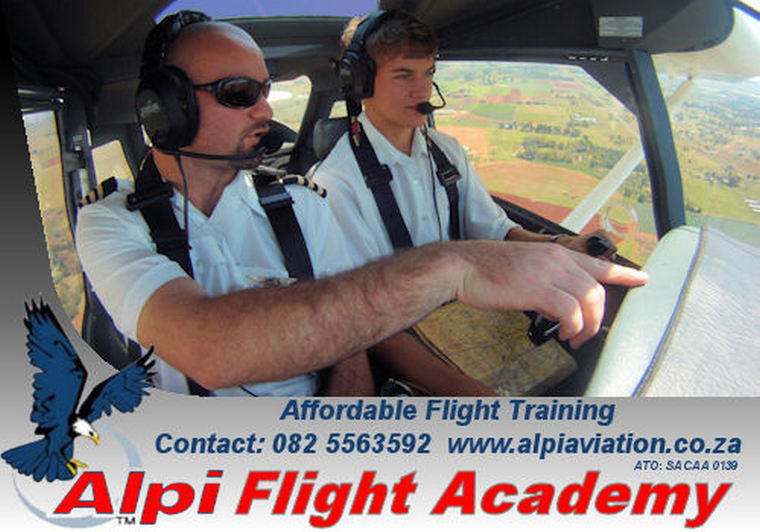
HIA MILESTONE DELIVERY REPORT LISTS CRITICAL NEXT STEPS FOR UK TO BE LEADER IN GLOBAL HYDROGEN AVIATION RACE
The Hydrogen in Aviation alliance (HIA), formed of easyJet, Rolls-Royce, Airbus, Ørsted, GKN Aerospace, Bristol Airport and ZeroAvia, has today released its Milestone Delivery Report - outlining the steps and timeline the UK Government and industry needs to follow to secure its position as a global leader in hydrogen-powered aviation.
The UK is home to many world-first advances in hydrogen-powered aircraft technology, from hydrogen engine testing to the first flights of hydrogen-fuelled planes - making it well placed to be a leader in hydrogen aviation. This would secure substantial economic, employment and sustainability benefits. To realise these benefits, we need an industrial strategy for the sector focussed on these long-term opportunities.
The UK will need to secure massive increases in hydrogen supply. This will involve the accelerated deployment of renewable energy generation and significant investment in hydrogen infrastructure and skills.
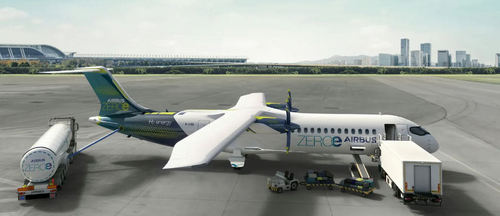
Johan Lundgren, CEO of easyJet and first Chair of HIA, said: "It's without doubt that the UK is well placed to be a global leader in hydrogen - but the opportunity will be gone if we do not act now to build on all the great work that has already been done.
"The breakthroughs in hydrogen-powered technology happening across the UK are truly astonishing but these advances will be inconsequential if we fail to complement them with the appropriate skills, infrastructure, investment and regulation needed to support hydrogen aviation.
"HIA's Milestone Delivery Report outlines the critical steps and the timeframe needed to do this and if followed, not only will it create significant wealth, jobs and prosperity across industry and across the UK, it will be a vital component in decarbonising the aviation sector."
Alan Newby, Director of Research and Technology, Rolls-Royce, said: "We believe in the potential of hydrogen-powered flight, and we are making good progress in developing the key technology building blocks required to make it a reality. This is an ambitious but necessary challenge, and we look forward to further accelerating progress across the entire hydrogen ecosystem with our industry partners and the UK government to achieve our shared vision of a more sustainable future for aviation."
Sergey Kiselev, Chief Business Officer, ZeroAvia said: "This report is a real testament to cross-industry efforts to set a practical pathway to adopting hydrogen as the fuel of the future for aviation. Hydrogen-powered aircraft will be flying commercially in the UK within the next few years, meaning that there will be a clear roadmap needed to scale the fuel supply as it grows into larger aircraft segments. Hydrogen in Aviation is a powerful coalition for driving this change in partnership with the Government."
Hydrogen-ready technology research and development: HIA recommends that measures are taken to support the transition from research to development, and ultimately industrialisation, of world leading propulsion and flight technologies in the UK.
The aviation sector is incredibly valuable to the UK's economy, bringing in more than £22bn directly to GDP, plus £34bn from exporting aerospace components. It also directly employs over 230,000 people.
HIA believes hydrogen will be critical in securing these jobs into the future as zero-emission technology develops, and this will bring immense value to regions all over the UK.
East Midlands Hydrogen, the UK's largest inland hydrogen cluster estimates its future hydrogen network could support up to 110,000 jobs in just the East Midlands alone - showing the potential that hydrogen has in terms of job creation.
As well as preserving an industry that is a key part of our economy, HIA maintains hydrogen could generate an additional £34bn for the UK every year.

AIR MALTA CEASED FLIGHT OPERATIONS ON 30 MARCH 2024
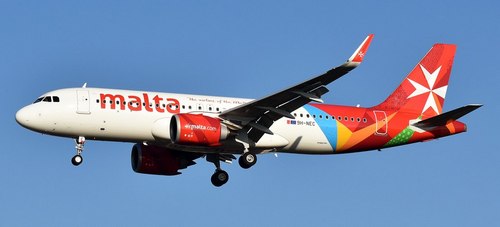
We also express our gratitude to all our loyal customers, travel partners, and collaborators for their support throughout the years.
Since the first Boeing 720B touched down on Maltese soil on March 29th, 1974, ahead of our inaugural flight on 1st April 1974, until our final flight on March 30th, 2024, Air Malta has proudly represented Malta on the global stage.
Moving forward, KM Malta Airlines will serve as the new national airline for the Maltese Islands.


Currently being tested at Schiphol is the use of electric autonomous buses. Every day, two self-driving Ohmio buses are following a fixed route and making stops at various locations on airside. These stops are close to the facilities of several cleaning and ground handling companies. This shuttle service is for employees working at those locations. With this trial, the airport wants to investigate what the advantages of autonomous transport can be and what employees think of it.
In the first phase of the trial, the technology behind the buses is being thoroughly tested and adapted to the airport infrastructure. The shuttle service is currently being used by employees and their experiences with self-driving transport are being investigated. Of the employees who use the autonomous service, 89% is willing to use it again. The initial findings show that the service is seen as safe and as a positive experience. The airport will continue testing the technology and assessing the possibility of expansion until the end of April.
Jan Zekveld, head of innovation at Royal Schiphol Group. "This trial represents another step towards our ambition of having an emission-free and autonomous ground operation by 2050. The knowledge and insights gained during this test period are of significant added value to future autonomous developments at Schiphol.
The autonomous buses each have the capacity to transport eight people at a time. Employees can board from a staff passageway that provides access to airside, and board and alight at any location that is on the route. Each journey lasts around 5 minutes.
Mohammed Hikmet, Executive Ohmio. "This collaboration underscores Ohmio's commitment to advancing visionary approaches for the future of transport. We are enthusiastic about the opportunity and are honoured to join hands with Schiphol Airport, a leading player in Europe's aviation industry".
In 2050, Royal Schiphol Group wants to operate the world's most sustainable and high-quality airports. The creation of a more sustainable and emission-free ground operation contributes to this ambition. Royal Schiphol Group envisions that by 2050 all vehicles will have been replaced by a contiguous fleet of autonomous, zero-emission vehicles and all associated processes automated. Even in an autonomous ground operation, the employee will still have an important role to play. The work will be more directive in nature and will involve a variety of tasks.

GULFSTREAM G700 EARNS FAA CERTIFICATION
Gulfstream Aerospace Corp., a wholly owned subsidiary of General Dynamics (NYSE: GD), today announced the all-new Gulfstream G700 has received Federal Aviation Administration (FAA) type certification, paving the way for customer deliveries of the most spacious aircraft in business aviation.
The G700's FAA certification also confirmed two new performance improvements, giving customers increased flexibility and airport availability: a balanced field length takeoff distance of 5,995 feet/1,827 meters and a landing distance of 3,150 ft/960 m (standard ISA day, sea level), both shorter than originally anticipated.
"We have successfully completed the most rigorous certification program in company history with the G700," said Mark Burns, president, Gulfstream. "I'd like to thank our world-class team of flight test, certification and engineering professionals, along with the many others at Gulfstream who have contributed to this accomplishment. The G700 brings a new level of performance and cabin comfort to business aviation and is doing so while meeting the highest certification standards our industry has ever seen."
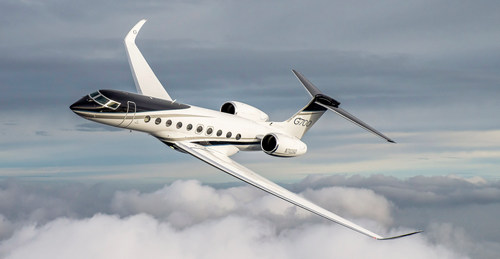
Along with the range and speed increases, Gulfstream announced that the G700 cabin altitude, already the lowest in business aviation, was further reduced to 2,840 ft/866 m while flying at 41,000 ft/12,497 m, providing even more comfort for passengers. The G700 cabin also features whisper-quiet noise levels, 20 Gulfstream Panoramic Oval Windows and 100% fresh, never recirculated air.
"I would also like to extend my thanks to the FAA G700 certification team for their support," said Burns. "On behalf of Gulfstream's more than 20,000 employees worldwide, I am proud and excited to begin our G700 customer deliveries."
Gulfstream Aerospace Corp. is a business unit of General Dynamics, a global aerospace and defense company that offers a broad portfolio of products and services in business aviation; ship construction and repair; land combat vehicles, weapons systems and munitions; and technology products and services. General Dynamics employs more than 100,000 people worldwide and generated $42.3 billion in revenue in 2023.


"We are delighted to deliver the first of four A330neo aircraft to Corsair," said Peter Anderson, the Chief Commercial Officer of AerCap. "The A330neo is one of the most desirable and in-demand aircraft in the world and will not only support Corsair's widebody fleet modernization but will bolster their sustainability commitments by reducing emissions and enhancing operational efficiency. We wish Pascal de Izaguirre and all the team at Corsair every success and look forward to working with them as these aircraft deliver."
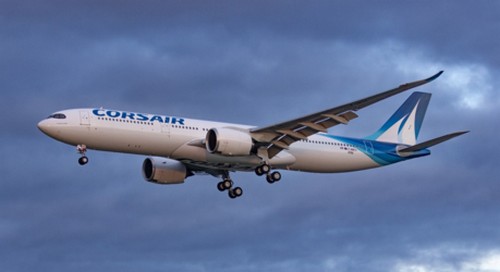
Corsair is a French long-haul airline, employing 1,118 staff members. It transports 1.5 million passengers annually. Corsair operates flights to the Caribbean (Guadeloupe, Martinique), the Indian Ocean (Réunion Island, Mauritius, Mayotte, Madagascar), Africa (Ivory Coast, Mali, Benin), and Canada (Montreal). Corsair operates from Paris/Orly, Lyon, Marseille, Bordeaux, and Nantes.


USA, Minneapolis-St. Paul International Airport, MN (MSP/KMSP) - United States of America: A Delta Air Lines flight Airbus A320-212 (N344NW), was taxiing when its wingtip struck Delta Air Lines Airbus A320 (N345NW), which was pushing back from its gate at Minneapolis-Saint Paul International Airport. Both Airbus A320s returned to their gates.
USA, Charlotte-Douglas International Airport, NC (CLT/KCLT): A Frontier Airbus A321-271NX, was boarding at the gate when the pilot smelled smoke in the cabin. Passengers in the front of the plane exited through the jet bridge. Passengers in the rear of the plane exited using slides.
India, Kolkata-Netaji Subhas Chandra Bose International Airport (CCU/VECC): Air India Express flight IX1886, a Boeing 737-800 (VT-TGG) and IndiGo flight 6E6152, an Airbus A320-251N (VT-ISS) were involved in a ground contact incident while taxing for departure at Kolkata-Netaji Subhas Chandra Bose International Airport (CCU). The right-hand winglet of the A320neo struck the left-hand winglet of the Boeing 737, shearing off the top part of the 737's winglet. Both aircraft sustained damage and returned to the apron.

Ford Tri Motor Scenic Flight AirVenture 2013

Google Banner Ad
 |
 |
 Copyright © 2024 Pilot's Post PTY Ltd
The information, views and opinions by the authors contributing to Pilot’s Post are not necessarily those of the editor or other writers at Pilot’s Post.
Copyright © 2024 Pilot's Post PTY Ltd
The information, views and opinions by the authors contributing to Pilot’s Post are not necessarily those of the editor or other writers at Pilot’s Post.